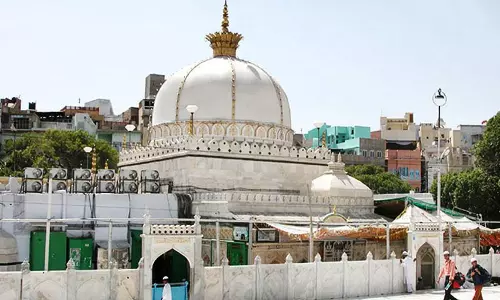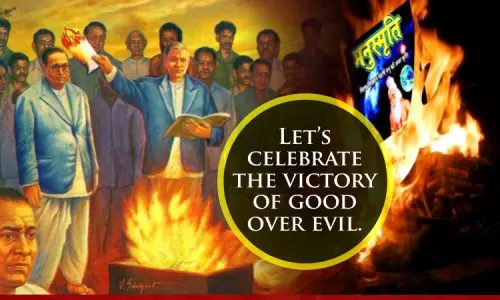
25th December 1927, Manusmriti Dahan Divas: A historical day to remember
text_fieldsIndia witnessed a milestone event of burning Manusmriti in public on December 25, exactly 92 years ago. Under the leadership of 'The father of Modern India' Dr Bhim Rao Ambedkar, thousands gathered in a small town called Mahad in Konkan, a coastal region of Maharashtra to show their hatred towards the Hindu religious text Manusmriti, that brutally treats women and 'Shudras' (Dalits) as mere second-class citizens.
Burning of Manusmriti in public did not only symbolizes hatred towards upper-class Brahmanism but it was a way of emancipation to highlight self-dignity for Dalits and women. The exploitative religious text was publicly burned in a specially constructed symbolic funeral pyre. It indicated the end of indignity, upper-caste hegemony and cruelty towards Dalits.
Mahad Satyagraha
The insignificant Hindu text was burned in an event during the historically acclaimed Mahad Satyagraha. It was a peaceful agitation organized by 'Shudras' for getting their right to drink water from the Mahad (Chavadar) tank. The satyagraha was led by Ambedkar on March 20 1927, which later observed this day as social empowerment day in India. On March 20, Dr Ambedkar and his co-workers led a procession of 2,500 "untouchables'' through main streets towards the Chavdar tank.
Dr Ambedkar and his followers consumed water from the tank. This was known as the Mahad Satyagraha. Even though there was a legal acceptance to drink water by anyone, upper-caste Hindus moved to local court against the Dalits who drank the water from the tank. Reports say that there was a huge pressure from casteist Hindus to abort the event of Manusmriti. At last, a Muslim man named Fattekhan gave his private property for protest by extending the solidarity to the Manusmriti burning event and the agitation.
Ambedkar had arrived from Bombay to the protesting site in a boat called 'Padmavat' and not through the roadway, as he faced some hurdles. Before burning Manusmriti, Dr Ambedkar made a speech "Let's destroy the authority of ancient Hindu scriptures that are born in inequality. Religion and slavery are not compatible". In the eveningof December 25, 1927 the resolution for burning Manusmriti was moved by Ambedkar's Brahmin associate named Gangadhar Neelkant Sahasthrabuddhe and a Dalit leader PN Rajabhoj.
Around 6 people were laboured to prepare the 'Vedi' pyre to burn the text. The sides of it were erected with banners carrying slogans "Destroy untouchability, bury Brahmanism, Manusmriti chi Dahan Bhoomi (Crematorium for Manusmriti)."
Some quotes from the Manusmriti are listed below:
"It is the duty of all husbands to exert total control over their wives. Even physically weak husbands must strive to control their wives."
"In case a woman enjoys sex with a man from a higher caste, the act is not punishable. But on the contrary, if a woman enjoys sex with a lower caste man, she is to be punished and kept in isolation."
"In case a man from a lower caste enjoys sex with a woman from a higher caste, the person in question is to be awarded the death sentence. And if a person satisfies his carnal desire with women of his own caste, he should be asked to pay compensation to the woman's faith."
"Since a woman is not capable of living independently, she is to be kept under the custody of her father as a child, under her husband as a woman (wife) and under her son as a widow."
"Consuming liquor, association with wicked persons, separation from her husband, rambling around, sleeping for unreasonable hours and dwelling are six demerits of women."
Under Ambedkar's leadership, the exploitative religious text which oppresses women and creates caste hierarchy in deep was burnt at 9 pm in December 1927 on behalf of thousands. The book regarded women as mere sexual objects, However Ambedkar had to face criticism, some said that "What is achieved by burning a text? Why burn an outdated text? He replied with "It is like that, why does Gandhi burn foreign clothes? Why do you give importance to an outdated text and how does it matter to you?"
Ambedkar being a staunch critic of Manusmriti, which is the base cause for sati and child marriage system always stood for emancipation of women and upliftment of Dalits. Thus, the day is also remembered as 'Stree Mukti Divas' though it is crucial to ask whether women are secure and free in independent India and article 17 of Indian constitution, that abolished untouchability is still upholding properly in the country.























